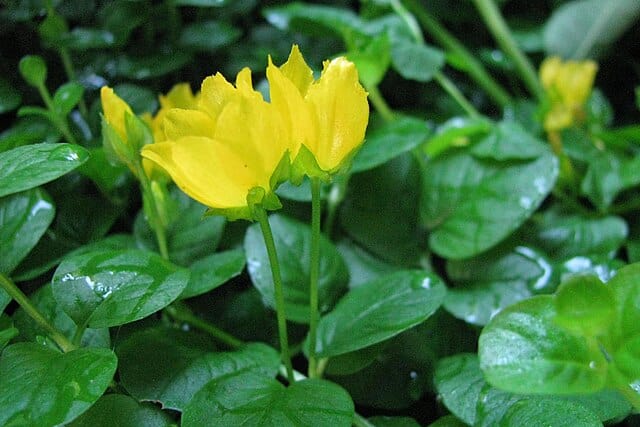Creeping Jenny, scientifically known as Lysimachia nummularia, is a charming perennial ground cover plant known for its vibrant green foliage that turns a beautiful golden yellow in the fall. With its versatility in the garden, this low-growing plant can thrive in a variety of settings, from sunny areas to partial shade.
If you’re considering expanding your garden or want to share this beautiful plant with friends, propagating Creeping Jenny is a straightforward process. In this guide, we’ll cover everything you need to know about propagating this delightful plant.
Understanding Creeping Jenny

Before jumping into propagation techniques, it’s essential to appreciate why Creeping Jenny is a beloved choice among gardeners. This hardy perennial:
Grows to about 6-12 inches in height.
Spreads widely, making it excellent for filling in garden gaps or providing erosion control.
Produces small, cup-shaped yellow flowers in late spring to early summer, adding to its charm.
Attracts pollinators, like bees, making it beneficial for your garden’s ecosystem.
Propagation Methods
There are several effective methods for propagating Creeping Jenny. The two most common techniques are stem cuttings and division. Let’s discuss each method in detail.
1. Propagating from Stem Cuttings
This method is particularly useful during the growing season, typically from spring to early summer when the plant is actively growing.
Steps:
Select Healthy Stems: Look for healthy, vigorous stems, ideally those that have not yet flowered. Choose stems that are 4-6 inches long for the best results.
Make the Cut: Using a clean, sharp pair of garden scissors or pruning shears, cut just below a leaf node to ensure the cutting can develop roots.
Prepare the Cuttings: Remove any leaves from the bottom half of the cutting since they will be buried in soil. This minimizes moisture loss and potential rot.
Rooting Hormone (Optional): If desired, dip the cut end in rooting hormone to encourage faster root development, although Creeping Jenny can root without it.
Plant the Cuttings: Fill a small pot or tray with a well-draining potting mix. Insert the cuttings into the soil, ensuring they are positioned upright and buried about an inch deep. Water lightly.
Create a Humid Environment: Cover the pot or tray with a clear plastic bag or a plastic dome to retain humidity. Ensure there is enough ventilation to prevent mold growth.
Placement: Place the cuttings in a location with bright, indirect sunlight. Keep the soil moist but not soggy.
Root Development: Within a few weeks, you should notice roots forming. You can check by gently tugging on the cuttings; if there is resistance, roots have likely developed.
Transplanting: Once the cuttings have a good root system (usually 4-6 weeks), they can be transplanted into the garden or larger pots.
2. Propagating by Division
If you already have established Creeping Jenny plants, division is a fast way to propagate more plants and keep your garden looking fresh.
Steps:
Timing: The best time for division is in early spring or early fall when the plant is not under stress from high temperatures.
Remove the Plant: Carefully dig up the entire plant, taking care not to damage its roots. Use a spade or garden fork for better leverage.
Divide the Roots: Once you have the plant out of the ground, gently separate the root ball into smaller sections. Each section should have at least a few healthy shoots and a good amount of roots.
Replant Immediately: Plant the divided sections back into the ground or into new pots. Ensure they are spaced appropriately to allow for future growth.
Water Well: After planting, water the divisions thoroughly to help them settle into their new homes.
Caring for New Plants
Regardless of the propagation method you choose, caring for your new Creeping Jenny plants is essential for their success.
Watering: Ensure the plants receive adequate water, especially during dry spells. Moist, well-drained soil is key; avoid letting them sit in waterlogged conditions.
Mulching: Applying mulch helps retain moisture and suppress weeds, which is beneficial for young plants.
Fertilizing: While Creeping Jenny thrives in various soil conditions, a balanced fertilizer in spring can help boost growth, especially if planted in poorer soil.
Sunlight: Though Creeping Jenny tolerates partial shade, it flourishes in areas with full sun to partial shade. If the leaves begin to look sparse, consider relocating them to a sunnier spot.





